 English
English 
more 

 English
English 
Views: 0 Author: Site Editor Publish Time: 2025-06-13 Origin: Site







Introduction
In cold climates, petroleum products and bio-fuels must maintain flowability to prevent filter plugging and pump starvation. The Pour Point and Cold Filter Point Tester from Changsha Friend Experimental Analysis Instrument Co., Ltd. provides standardized measurements of the lowest temperature at which a liquid will flow (pour point) and the temperature at which solids will clog a filter (cold filter plugging point, CFPP), guiding users in selecting suitable fuels and lubricants for sub-zero conditions.
Testing Principles
Pour Point (ASTM D97): A sample is cooled in a controlled bath with 3 °C/h cooling rate. At each 3 °C interval, the sample container is tilted to check for flow. The pour point is the lowest temperature at which movement is observed.
Cold Filter Plugging Point (ASTM D6371): Fuel is cooled at a defined rate (1.5 °C/min) and then drawn through a standard 45 µm filter under vacuum. The CFPP is the lowest temperature at which the sample passes the filter within a set time (60 seconds).
Design Highlights
Dual-Zone Cooling Bath: Peltier or refrigerant-based system achieves temperatures down to –60 °C with ±0.2 °C stability.
Automated Sample Handling: Robotic tilting mechanism for pour-point checks and integrated filtration module for CFPP runs reduce operator variability.
Optical Flow Detection: Camera system with image-analysis software can detect first movement in pour-point tests, eliminating subjective judgment.
Customizable Protocols: Users can adjust cooling rates, hold times, and filter pore sizes to match regional standards or specific fuel types.
Reporting and Archiving: Results are logged with sample IDs, run parameters, and temperature curves; data can be exported via USB or network.
Industry Applications
Fuel Distributors: Verify diesel, biodiesel, and heating oils meet winter-grade requirements before shipment.
Power Generation: Ensure turbine oils and generator fuels flow reliably during cold-start conditions.
Lubricant Formulators: Optimize pour point depressant additives for low-temperature performance.
Maritime Operations: Maintain fuel flow in arctic or sub-arctic maritime environments.
Best Practices
Sample Preparation: Filter through 2 µm filters to remove crystals or particulates that could affect CFPP results.
Instrument Calibration: Verify temperature accuracy with certified calibration fluids or standards before each test series.
Visual Versus Automated Detection: If using manual pour-point checks, ensure uniform lighting and tilting intervals; if automated, validate image-analysis thresholds.
Bath Maintenance: Change refrigerant or Peltier bath fluid per manufacturer schedule to sustain cooling performance.
By integrating pour point and cold filter point testing into quality workflows, users can select and blend fuels and oils that maintain fluidity and filterability under the most demanding low-temperature environments, ensuring reliable equipment start-up and operation.
Auto Lubricating Oil HTHS Dynamic Viscosity Tester Manufacturer
Apparent Viscosity Analyzer at High Temperature And High Shear Rate
High Temperature Foaming Characteristics of Lubricating Oils Tester
Foaming Characteristics of Lubricating Oils Tester Manufacturer
Lubricating Oils Foaming Characteristics Tester Manufacturer
Water Separability of Petroleum Oils And Synthetic Fluids Tester
Evaluating Wear Resistance with The Lubricant Anti‑Wear Performance Tester
Quantifying Volatility with The Lubricating Oil Evaporation Loss Tester
China Fretting Wear Protection by Lubricating Greases Tester
Characterizing Foam Behavior with the Lubricating Oils Foaming Characteristics Tester
Determining Flammability with The Automatic Open Cup Flash Point Tester
